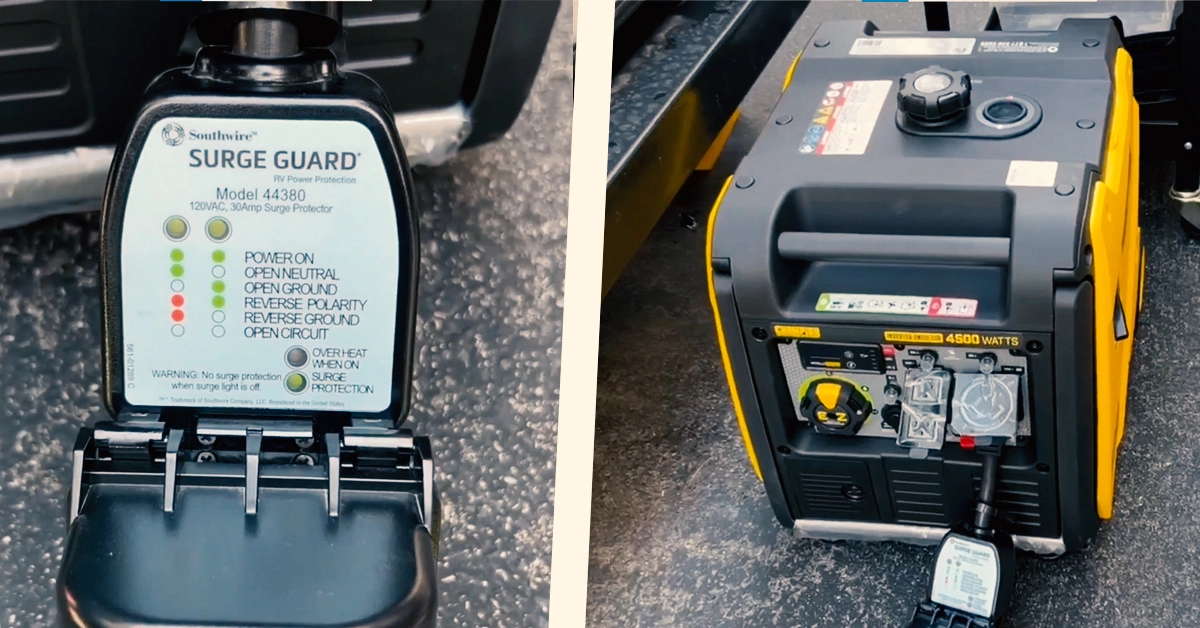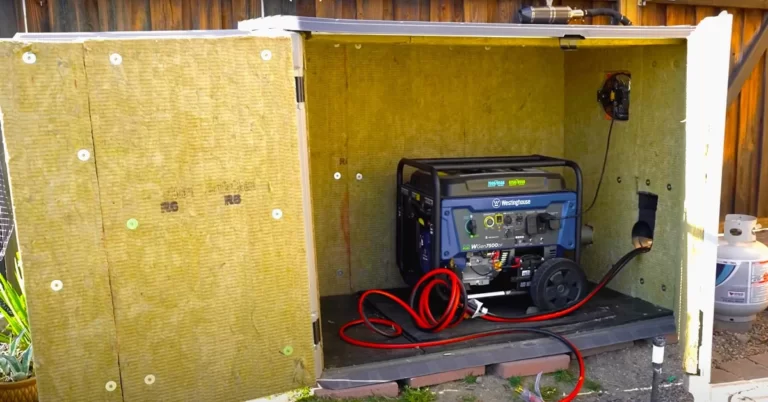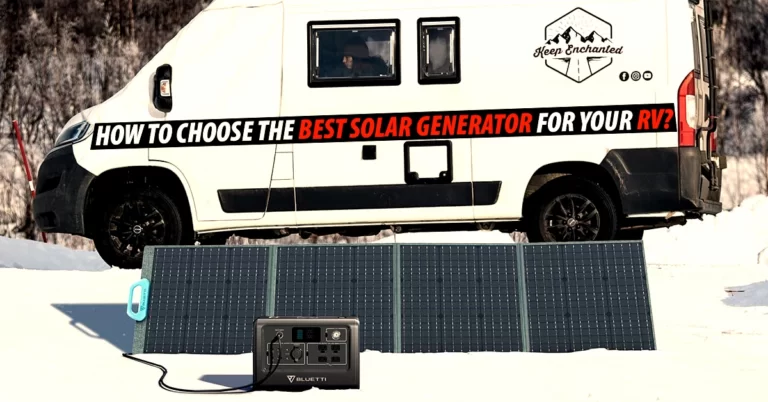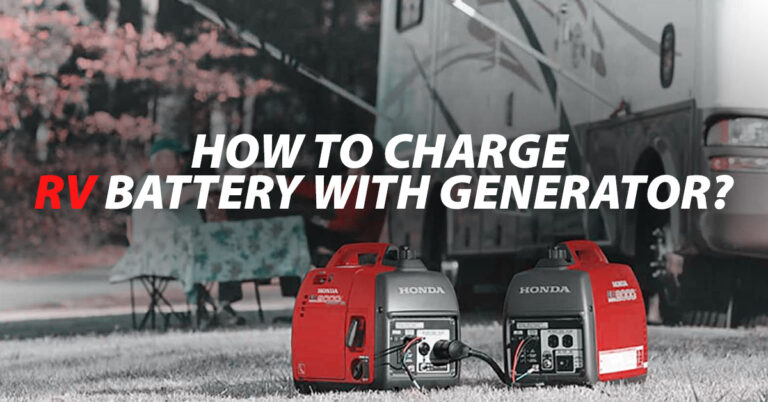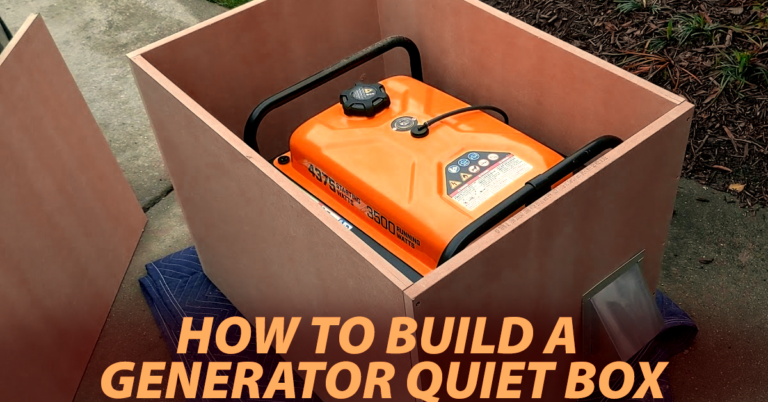Do I Need To Use A Surge Protector With A Generator?
When it comes to safeguarding your electronic gadgets and providing a consistent power supply, surge protectors and generators are crucial components. Surge protectors are advised for regular generators and grid power because power spikes and surges can harm delicate electronics. Surge protectors are not always necessary with inverter generators because they convert AC to DC and back to AC for a smooth current without harmonic distortions like surges and spikes. We will address the distinction between surges and spikes, whether generators contribute to electrical supply surges, the operation of surge protectors, and the significance of surge protection for generators. Also, we’ll discuss how to pick the best surge protector for a generator and suggest a few surge protectors. You can choose to protect your gadgets during storms and blackouts by understanding how surge protectors function as well as why and how surges might happen.
WHAT CAUSES POWER OUTAGES?
Everyone who experiences a power outage may find it frustrating, especially if it interferes with everyday activities or their job. Power outages can happen for a variety of reasons, and knowing what causes them can help you better prepare and lessen their effects.
Power Sags
Power sags or brownouts are one of the most typical reasons for power outages. This occurs when the electrical load on your home unexpectedly increases, temporarily lowering the voltage. A power sag can occur when large appliances, like air conditioners and refrigerators, start up simultaneously. Even though the power to your home might not be fully cut off, it may cause lights to flicker or electronic gadgets to lag.
Power Spikes
Another reason for power outages is power spikes. They happen when the voltage suddenly rises, which can harm electronics and home appliances. Power surges frequently occur during severe weather conditions, such as lightning strikes, or when a power plant sustains damage.
Power Surges
When you switch off high-wattage equipment like air conditioners, refrigerators, or electric heaters, power surges may happen. The abrupt shutoff of these items can result in a power surge that damages other appliances and devices in your house.
Whole-house generators can disrupt power even though they are intended to keep the lights on during a power outage. Your electricity may experience spikes and surges from generators, particularly when they first turn on or off. This is why it’s crucial to have a surge protector installed to shield your electronic equipment from possible harm brought on by power outages.
What Exactly Are Power Surges?
An electrical power surge is a brief increase in current, voltage, or frequency that can harm electronic devices. Many factors, including lightning strikes, problems with the power grid, and defective electrical systems, can cause surges.
Causes of power surges
When the voltage exceeds the threshold at which electronic equipment is intended to operate, the gadget may be harmed. Electronic items, such as computers, televisions, refrigerators, air conditioners, and other appliances, can suffer instant or slow harm from power surges.
Differences Between Power Surges From The Grid And Generator Surges
Power surges come in two flavors: internal and external. High-powered equipment like air conditioners, refrigerators, and washing machines is to blame for internal surges that happen inside the home. Events outside the home, such as lightning strikes or power system problems, are what generate external surges.
Because the grid is a more complicated system, power surges from it occur more frequently than from generators. An overload or abrupt changes in the load requirements can cause a generator’s power to surge. Moreover, a generator’s first startup or shutdown surges have the potential to harm delicate electronics.
How Do Surge Protectors Work?
Surge protectors serve as a barrier between your gadgets and the power source. They aid in protecting your electronics, appliances, and other electrical equipment from being harmed by electrical surges.
A metal oxide varistor, or MOV, is a part found inside surge protectors. When the voltage falls below a certain threshold, this gadget conducts electricity. Instead of allowing the excess voltage to reach your appliances, the MOV immediately responds when the voltage rises over that threshold and directs the extra current to the ground wire.
Other parts of the surge protector, including capacitors, inductors, and transformers, combine to absorb and reroute any surge away from your devices.
The joule rating of surge protectors is another crucial consideration. The surge protector’s joule rating reveals how much energy it can withstand before failing. The better the protection, the greater the joule rating.
A surge protector absorbs excess energy and directs it away from your electrical equipment when you plug your devices into it. This helps keep your equipment in better condition and increases its lifespan.
Surge protectors obviously have limitations and are not infallible. The surge protector may not be able to completely absorb the excess voltage if the surge is extremely strong, which could result in some of it still reaching your gadgets. The surge protector might need to be changed in this situation if it malfunctions.
It is significant to remember that surge protectors become less effective over time and after numerous surges. Thus, it’s advised that you change your surge protectors every two to three years, especially if you live somewhere where electrical surges are common.
Can A Generator Cause A Power Surge?
Standard Generators Can Cause A Surge
Knowing whether a generator can create power surges is essential since it can seriously harm electronics and appliances. The majority of generators do not typically create surges, but there are certain crucial aspects to take into account.
Variations in current output are one of the main reasons for power surges when generators are used. Typical generators have a constant speed of 3600 rpm, and while the voltage and amperage they produce are constant, there may be brief decreases or spikes in their flow of current. Surge protection is still necessary, even if these variations are often small and won’t harm appliances.
Pure Sine Wave vs. Modified Sine Wave Quality
The type of generator you are utilizing is an additional important component to take into account. Pure sine wave and modified sine wave generators are two different types. A pure sine wave generator creates a “clean” current that is akin to what the grid provides. A modified sine wave generator’s current, on the other hand, is “dirty” and appropriate for more durable appliances. Pure sine wave generators are normally more expensive than modified sine wave generators, but if you wish to safeguard your delicate electronics, the expenditure could be justified.
Different from other types of generators, inverter generators operate differently and are less likely to result in surges. Inverter generators contain more sophisticated circuitry to supply pure sine wave currents, and they only produce the current required by the connected appliances. These generators are often more expensive than regular generators, but if you need to safeguard your delicate electronics, they are worth the investment.
The Importance of Surge Protection for Generators
An explanation Of Why Surge Protection Is Important For Generators
For locations without access to the electrical grid or during power outages, generators are a necessity. Unfortunately, electrical spikes from generators can seriously harm or even destroy delicate electronics like computers, smartphones, and other gadgets.
For your appliances and electronics to be safe against voltage spikes and drops, which can seriously harm them, surge protection for generators is essential. By controlling the power supply and guaranteeing a steady and continuous flow of electricity, surge protection can also help to increase the lifespan of your gadgets.
The Advantages Of Using A Surge Protector With Your Generator
Using a surge protector with a generator can offer a range of benefits, including:
Protection Against Voltage Fluctuation
A surge protector may shield your electronics from voltage spikes and drops, maintaining a steady power supply and avoiding damage.
Increased Lifespan For Your Electronics
A surge protector can aid in extending the life of your equipment by offering a steady and constant power supply.
Ease Of Mind
During extreme weather or protracted power outages, knowing that your electronics are protected from power surges can give you peace of mind.
The Dangers Of Not Using A Surge Protector When Using A Generator
Not using a surge protector with a generator can pose significant risks, including:
Damage To Your Devices
Your devices may require expensive repairs or replacements as a result of power surges that seriously harm them.
Safety Risks
Power surges can cause electrical shocks or flames, which can be dangerous for both humans and property.
A Generator’s Lifespan Being Shorter
Your generator may need to be repaired or replaced if it is damaged by voltage spikes.
Protect Your Home From Generator Power surges
If you have a generator, you are aware of how crucial it is to maintain power during a blackout. You might not be aware, though, that running a generator can endanger your household gadgets. Power surges from generators can harm your electronic equipment and necessitate costly repairs or replacements. The good news is that employing a surge protector will make it simple for you to safeguard your property against generator power spikes.
The Most Effective Surge Protector
To choose the best surge protector for your generator, you must take into account a number of parameters.
Joule Rating
The most crucial aspect to take into account when picking a surge protector is the joule rating. It gauges the surge protector’s capacity to withstand electricity. The more power it can handle, the greater the joule rating. You need a surge protector for a generator that has a high joule rating and can handle the power of a complete home generator.
Surge Protector Type
There are numerous varieties of surge protectors on the market. Power strips, surge suppressors, and uninterruptible power supplies (UPS) are the three categories uninterruptible power supplies (UPS) are the three categories. Power strips don’t have any surge protection and merely add more outlets. Power surges are protected by surge suppressors, and backup power is also provided by UPSs. You need a surge suppressor for a generator that can withstand the power of a complete home generator.
Brand
Surge protectors are not all created equal. Several brands have different reputations for quality. Choose a reputed company with a track record of manufacturing trustworthy surge protectors.
Clamping Voltage
At a level known as the clamping voltage, the surge protector starts to deflect excess electricity away from connected devices. The better the protection, the lower the clamping voltage. A clamping voltage of 400 volts or less is advised for generators.
Number of Outlets
Think about how many outlets your generator will require. Make sure there are enough outlets on the surge protector for all the devices you intend to connect.
Cord Length
Make sure the cord will be long enough to extend from the generator to wherever you need to plug in your gadgets by measuring the length of the cord.
Recommended Surge Protectors For Generators
The following are some recommended surge protectors for generators:
Tripp Lite Isobar
Your precious electronic devices are well protected by the Tripp Lite Isobar 2 Outlet Surge Protector Power Strip. This surge suppressor offers two NEMA 5-15R outlets and plugs directly into a typical NEMA 5-15R outlet without a power cord thanks to its superior surge protection and metal housing. It complies with the most recent UL 1449, 3rd edition safety requirements, and provides 1410 joules of surge protection. Additionally, the surge protector has diagnostic LEDs that instantly verify the states of the power, protection, and line fault.
The Isobar 2 Outlet Surge Protector comes with optional hardware for permanent mounting to an outlet cover and is made to integrate seamlessly into your system. Superior security is provided by its sturdy, fire-resistant metal housing, and its isolated filter banks shield against internal interference. A lifelong limited warranty is also included with this surge protector, protecting your investment. The Tripp Lite Isobar 2 Outlet Surge Protector Power Strip is, all things considered, a dependable, practical, and secure choice for shielding your devices from power surges and spikes.
CyberPower Home Theater
For protecting your home theatre devices from harm brought on by electrical surges, consider the CyberPower CSHT1208TNC2 Home Theater Surge Protector. This gadget provides dependable power protection with 12 surge-protected outlets, including 4 outlets that are spaced widely apart, and 3150 joules of surge protection. It is simple to set up and use thanks to the 8-foot power cable with a 45-degree offset NEMA 5 15P plug and keyhole mounting slots. The surge protector also has two pairs of gold-plated RG-6 coaxial connectors that safeguard cable/satellite TV receivers and broadband modems, as well as data line security with RJ45 and RJ11 ports for networking and telecommunication devices. A lifelong restricted warranty and a $500,000 connected equipment guarantee are also included with the device. Overall, for anyone looking to shield their home theatre devices from power surges, the CyberPower CSHT1208TNC2 is a fantastic option.
Belkin Pivot Plug
With its 1800-joule energy classification, the Belkin 8-Outlet Pivot-Plug Power Strip Surge Protector with 6ft Cord and Telephone Protection is a dependable and robust power strip made to shield up to 8 devices from power surges. With six pivoting surge-protected outlets, safety locks, and reduced electromagnetic and radio frequency interference, this power strip is the perfect addition to any home or workplace setup. For a worry-free buy, the surge protector also includes a lifetime warranty and a $100,000 connected equipment warranty.
Protecting your home gadgets against generator power spikes requires using a surge protector. Don’t forget to check for extra features, pick a surge protector with a high joule rating, and replace it every two to three years. By keeping your equipment safe and avoiding pricey repairs or replacements, you can save money.
Is A Surge Protector Compatible With A Generator?
To be more specific, a surge protector is made to guard against voltage spikes, power surges, and electrical noise brought on by lightning, power grid fluctuations, and other electrical interference sources. Using a surge protector in conjunction with your generator can protect your appliances and electronic equipment from any power surges that the generator may produce.
Choosing the right surge protector for your generator, on the other hand, is critical. Surge protectors are not all made equal, and some might not work with a generator. To absorb as much energy as possible, the surge protector you select should be certified for outdoor use and have a high joule rating. In order to maintain the surge protector’s efficiency, it is crucial to replace it every two to three years or after a surge.
Is It Safe To Plug A Surge Protector Into A Generator?
The primary concern while utilizing a generator should be safety. Due to the noxious chemicals they release and the loud noise they make, generators can be deadly objects. They are also immensely helpful for supplying electricity to gadgets and appliances in remote areas or during power outages.
Use a surge protector to shield your electronics from power surges if you wish to use a generator to power your appliances. You might be asking if there are safer alternatives to plugging a surge protector straight into the generator.
Although it is feasible, it is not recommended to plug a surge protector directly into the generator. Nevertheless, it is not made to handle the high wattage of larger appliances like refrigerators or air conditioners. Generators often contain a 120-volt plug that can be used to power small appliances and electronics. A surge protector plugged into the generator directly could not offer enough security from power spikes.
An outdoor extension cord is a preferable choice for connecting the generator to your appliances. Outdoor extension cords are shielded from the elements and made to be used in all kinds of weather. Moreover, they have a higher gauge, handling more power than standard extension cords.
In accordance with the wattage of the generator and the appliances you intend to power, it’s critical to pick the appropriate extension cord size. Before using your generator or extension cord, make sure to read the instructions (how to protect outdoor extension cord from rain/ and the safety precautions that are included.
An external extension cord can then be used to connect your appliances to the generator, after which you can add a surge protector. This will add an additional layer of defense against power surges, which can harm or even destroy your devices and appliances.
Can You Use Power Strips with generators?
Power strips are a common sight in homes and offices, providing additional outlets for multiple devices to be plugged in at the same time. With the use of generators becoming more common in emergency situations, many people wonder whether power strips can be used with generators as well.
The answer is yes; power strips can be used with generators, but it’s important to use them safely. One of the primary concerns is the potential for overloading the generator. Most generators come with a limited number of outlets, and if you plug too many devices into a power strip, it can overload the generator and cause it to shut down or even damage it.
To avoid this, it’s important to calculate the total wattage of all the devices you plan to use with the generator and ensure that the generator’s capacity is at least 1.5 times greater than the total wattage of those devices. This will ensure that the generator can handle the load and won’t be overloaded.
Another important consideration is to avoid daisy-chaining power strips. This means connecting one power strip to another in a chain to extend the reach of the generator’s outlet. This is dangerous and increases the risk of electrical fires and system overloads. Instead, use a single power strip that can accommodate all the devices you need to plug in.
It’s also important to use a power strip that is rated for outdoor use, especially if the generator is being used outside. Outdoor-rated power strips are designed to be weather-resistant and can handle exposure to moisture and sunlight.
Has The Generator Fried The Surge Protector?
What transpires if a surge protector is destroyed by a generator? Well, if a surge protector is not rated to take the load, a generator frequently overloads it. The surge protector can even malfunction or detonate in some situations.
The cause of this is that generators have the capacity to produce more voltage than your home’s outlets, and if the generator output exceeds the surge protector’s capacity, the device may become overloaded and malfunction. Make sure your surge protector is rated for the output power of the generator before using it.
Also, the total wattage of the devices you intend to power should match or exceed the wattage rating of the surge protector. Underrated surge protectors run the risk of overheating, burning out, or blowing out, which could harm the connected equipment.
Ensure that the generator’s power rating is at least 1.5 times greater than the combined wattage of all the electronics and appliances you intend to use with it. Your electrical equipment may experience stress from a generator that is too small for your requirements, leading to failure or malfunction.
It’s advisable to use high-quality surge protectors with adequate wattage ratings and link them to the generator via an outdoor extension cord in order to reduce the chance of a generator blowing up a surge protector. To increase the range of your generator’s outlet, stay away from daisy-chaining power strips because this might overload your system and may be against local fire safety laws in some areas.
Can Generators Cause Surges?
Whether there is a power outage or you are in an off-grid area, generators can be a great source of backup power. A recurring question, though, is if surges from generators could harm your electrical gadgets. Well, in a nutshell, it really depends on what kind of generator you have.
Conventional vs. inverter generators
The electricity produced by conventional generators, which rotate at 3600 RPM, might experience brief decreases and spikes. Even though these variations might not be considerable, they can be dangerous for delicate electronics like computers, TVs, and cell phones.
On the other hand, inverter generators are built to deliver steady and reliable power output. They are less likely to result in surges because they only provide the amount of power you actually need at any given time. As a result, they offer a safer alternative for powering delicate gadgets.
Portable vs. standby generators
Portable generators are more manageable and compact. Depending on the size of the generator, you can use it to power a few appliances or your entire house. However, when connected directly to electronic gadgets, portable generators could result in surges because they are not connected to your home’s electrical infrastructure.
When the power goes out, a standby generator that is attached to your home’s electrical system will turn on automatically. They deliver cleaner power output that is less likely to result in surges because they are hardwired into your home.
Surge protectors may not be necessary for generators, but it is still crucial to select the best kind of generator for your requirements. Think about the types of appliances you’ll be using and how much power they’ll need. When making a purchase, you should also think about the generator’s type and stability of power production.
FAQs
-
Do I need surge protection with an inverter generator?
It is still advised to use surge protection with all of your equipment, even though inverter generators normally offer cleaner power and are less likely to generate power surges. It is always better to be safe than sorry.
-
Can I plug a generator into a regular power strip?
No, it is not advised to connect a generator to a standard power strip because doing so could overload it and increase the risk of fire or electrocution. Instead, connect the generator to your appliances using a robust outside extension cord with integrated surge protection.
-
How long do surge protectors last?
Depending on their quality, usage, and level of electrical activity in your area, surge protectors can live for three to five years or longer. In order to provide your devices with the best protection, surge protectors should be replaced every three to five years.
-
Can a surge protector protect against lightning strikes?
Surge protectors are intended to guard against voltage spikes and power surges; however, they might not be completely effective against direct lightning strikes. Therefore, it is advised that you unplug your gadgets during thunderstorms and take extra precautions to safeguard your house from lightning strikes.
-
Can I use a power strip and a surge protector together?
Combining the use of a power strip and a surge protector is not advised because it could overload the strip and lessen the surge protector’s efficiency. Instead, choose a high-quality surge protector that can handle all of your gadgets.
-
Can I leave my surge protector plugged in all the time?
It is secure to always have your surge protector plugged in. To reduce the risk of power surges, unplug your equipment during lengthy periods of inactivity or during thunderstorms.
-
Can I use a surge protector with my outdoor generator?
With an outdoor generator, you can use a surge protector, but make sure to pick one that is rated for the total wattage of all the items you intend to power.
-
Do I need to replace my surge protector after it has protected against a surge?
Indeed, it is advised to replace a surge protector after it has successfully shielded your equipment from a power surge. The inside components may have been harmed even though they may still appear to be in good condition on the surface, which means the next time a surge happens, they may not be able to protect your gadgets.
-
Are all surge protectors the same?
No, there are several types and ratings of surge protectors. Look for surge protectors that are rated appropriately for your planned purpose and are specially made for use with generators.
-
What Is the Difference Between a Power Surge and a Power Spike?
When an appliance or other item in your home uses excessive amounts of the electrical supply, a power surge results. Computers, DSLR cameras, and high-end audio systems are just a few examples of delicate electronic equipment that could be harmed by the additional current that passes through the electrical supply. For this reason, many homeowners have surge protection equipment.
A power spike, on the other hand, results from an external source like lightning that hits a power plant or transmission line. Through the transmission network, this abrupt spike in voltage or current might transmit currents that are significantly higher than the safety limit. Depending on how severe the surge was, your electronics could burn, catch fire, or even explode.

